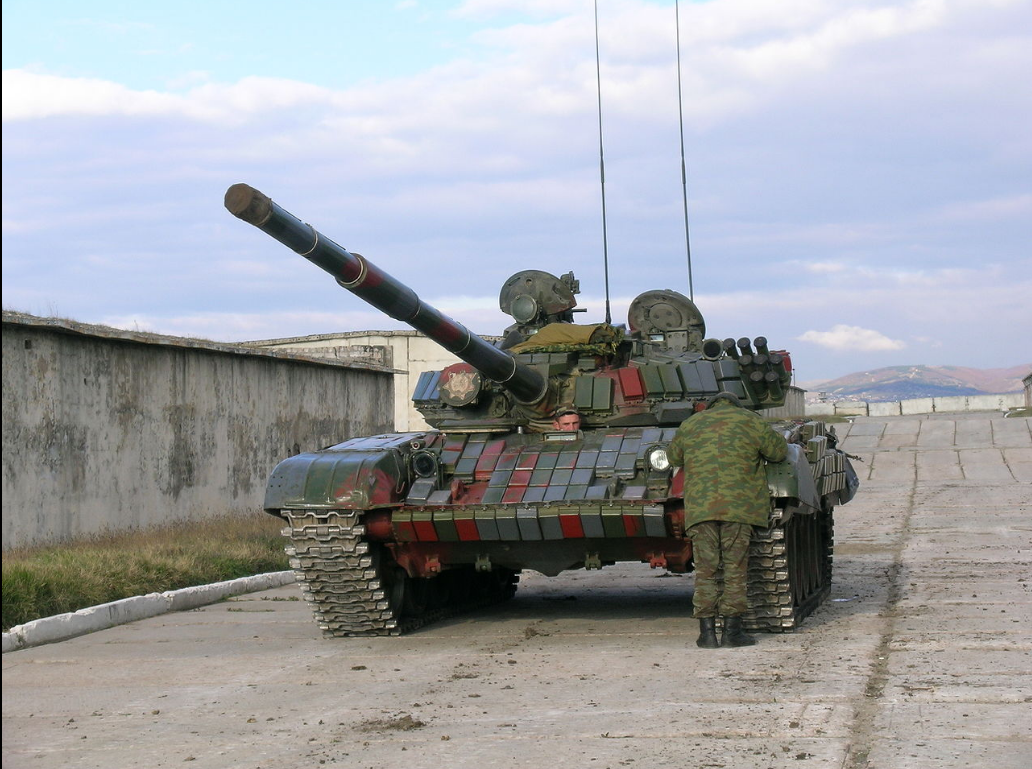T-14 "Armata" (Wikipedia)
Ukrainian troops destroyed the T-14 tank in war. That thing is a good example that when even when something looks like well working everything can go wrong. Even if the protective systems and all other things work fine in exercises. The real situations are different.
We can compare the destruction of the Armata tank with the case when the Serbian AA-flak destroyed a US stealth fighter. The F-117 stealth fighter or bomber seemed an invincible weapon. But the time drove through that type of solution. The Serbian AA missile shot. And then the regular AA cannons destroyed that aircraft.
The T-14 "Armata" is equipped with an active self-protecting system that shoots steel flechettes against the incoming ammunition. The system has the reactive explosive plates or bricks that cover the entire tank and possibly the aimed "Trophy" type system, that shoots incoming missiles or bazookas HEAT ammunition. The problem is that the reactive armor requires that the explosive plates can shoot away by using rapid-firing cannons. The reactive armor can be effective against one grenade or missile.
The reactive armor is effective. But the problem is that the explosive bricks that are protecting the tank can use only a single time. In reactive armor, the explosive brick detonates the missile before it affects the surface of the tank. But when the brick is detonated the new explosive brick must be put in its place.
A T-72 tank layered with reactive armour bricks. (Wikipedia, Reactive armor)
The effect of reactive armor depends on the number of explosive bricks. A large number of small explosive bricks means that the reactive armor stands against more grenade shots than the reactive armor that has only a few explosive bricks.
When the large explosive brick is exploded that uncovers a larger surface of the body of the tank. And that point is vulnerable against very accurate anti-tank weapons. So there is the tactic where the multiple dummy heat ammunition will shoot against the tank. That is protected by using reactive body armor. Then the smart weapons will aim at the holes of the reactive armor.
But multiple hits can cause the situation that a large number of those explosive plates are destroyed. And that uncovers the core of the tank. So the reactive armor requires that the plates or bricks will replace after they are exploded. The explosion brick is always single used. And that means the new brick must be put in the place where exploded brick has been.
There is the possibility that those explosive plates are equipped with steel flechettes. In that case, the steel flechettes can destroy incoming missiles or grenades very easily. But that requires that the system recognizes the incoming ammunition. There are two ways to make those systems.
One is simple infrared, and the second is a combination of image recognition and radar systems. There is the possibility that the counter weapon has two components. The primary system might have a flechette shooting machine gun that is similar to the CIWS systems of the navy. That system can have an image recognition component that makes it capable to shoot armed persons. And then the backup system could be the explosive bricks that are shooting steel arrows against ammunition that are passed the machine gun.
If the system cannot recognize the ammunition. It will not shoot flechettes. The other problem with that kind of system is that they can shoot their flechettes mistakenly. There is not a very long time to decide if some flash is the missile launch. And if the reactive armor shoots flechettes too early that can cause the flechettes are ended. The problem is that those flechettes are dangerous for people around that tank. So infantry must keep distance from that kind of tank.
There is planned to create microwave-based systems that are used to destroy incoming ammunition like Javelin missiles before they hit the target. The problem is that if those microwave systems activate in the wrong place like a parade. They can cause heavy injuries to people who are near them.
Images and other sources:
https://www.newsweek.com/russia-ukraine-tsaplienko-tank-t-90-1703662
https://en.wikipedia.org/wiki/1999_F-117A_shootdown
https://en.wikipedia.org/wiki/FGM-148_Javelin
https://en.wikipedia.org/wiki/Reactive_armour
https://en.wikipedia.org/wiki/T-14_Armata
https://en.wikipedia.org/wiki/Trophy_(countermeasure)
https://networkedinternet.blogspot.com/






No comments:
Post a Comment
Note: Only a member of this blog may post a comment.